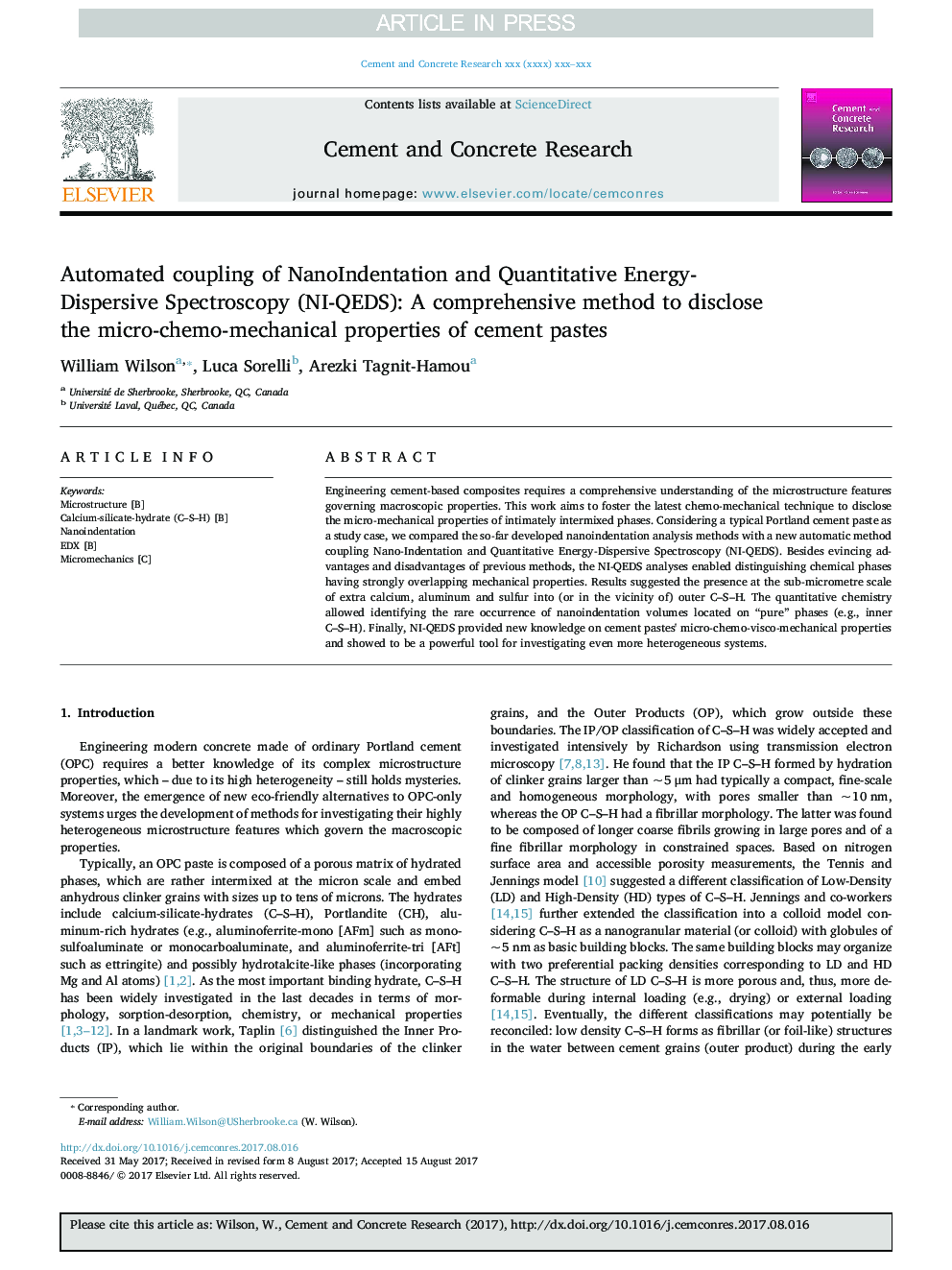| Article ID | Journal | Published Year | Pages | File Type |
|---|---|---|---|---|
| 7884878 | Cement and Concrete Research | 2018 | 17 Pages |
Abstract
Engineering cement-based composites requires a comprehensive understanding of the microstructure features governing macroscopic properties. This work aims to foster the latest chemo-mechanical technique to disclose the micro-mechanical properties of intimately intermixed phases. Considering a typical Portland cement paste as a study case, we compared the so-far developed nanoindentation analysis methods with a new automatic method coupling Nano-Indentation and Quantitative Energy-Dispersive Spectroscopy (NI-QEDS). Besides evincing advantages and disadvantages of previous methods, the NI-QEDS analyses enabled distinguishing chemical phases having strongly overlapping mechanical properties. Results suggested the presence at the sub-micrometre scale of extra calcium, aluminum and sulfur into (or in the vicinity of) outer C-S-H. The quantitative chemistry allowed identifying the rare occurrence of nanoindentation volumes located on “pure” phases (e.g., inner C-S-H). Finally, NI-QEDS provided new knowledge on cement pastes' micro-chemo-visco-mechanical properties and showed to be a powerful tool for investigating even more heterogeneous systems.
Keywords
Related Topics
Physical Sciences and Engineering
Engineering
Industrial and Manufacturing Engineering
Authors
William Wilson, Luca Sorelli, Arezki Tagnit-Hamou,
